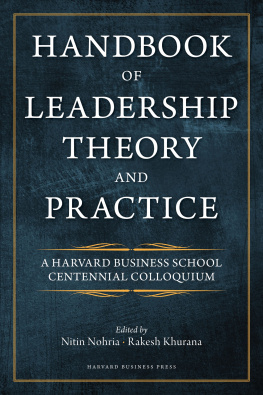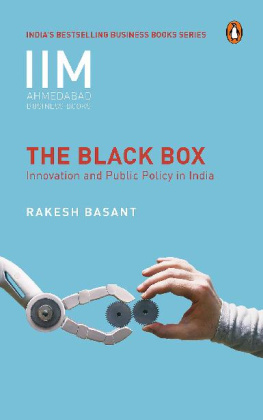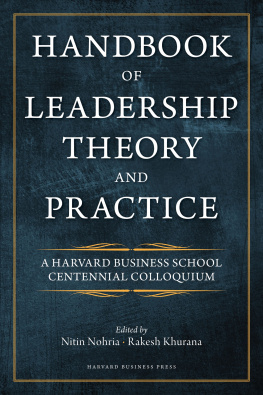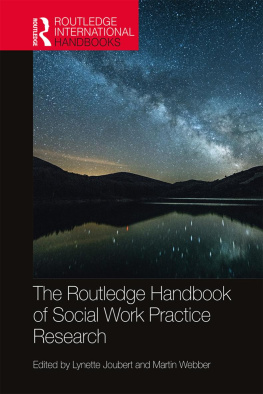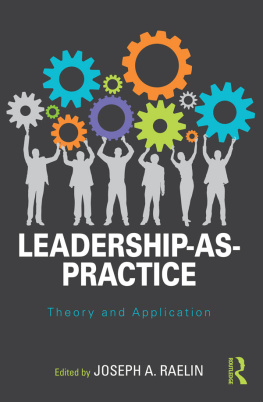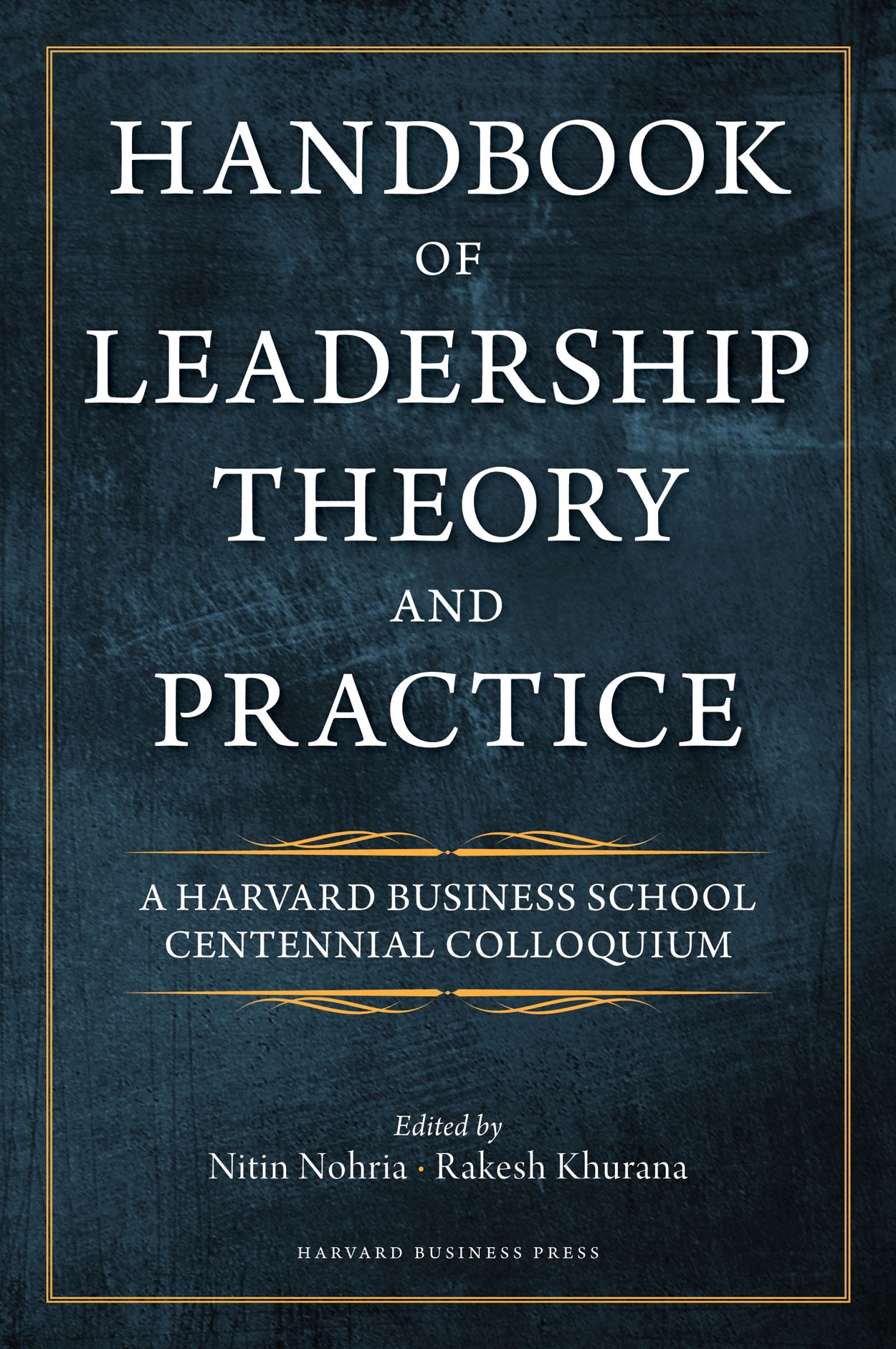Copyright 2010 Harvard Business School Publishing Corporation
All rights reserved
Printed in the United States of America
14 13 12 11 10 5 4 3 2 1
No part of this publication may be reproduced, stored in or introduced into a retrieval system, or transmitted, in any form, or by any means (electronic, mechanical, photocopying, recording, or otherwise), without the prior permission of the publisher. Requests for permission should be directed to permissions@hbsp.harvard. edu, or mailed to Permissions, Harvard Business School Publishing, 60 Harvard Way, Boston, Massachusetts 02163.
Library of Congress Cataloging-in-Publication Data
Handbook of leadership theory and practice / edited by Nitin Nohria & Rakesh Khurana.
p. cm.
9781422157114
1. Leadership. 2. Executive ability. 3. International business enterprises.
I. Nohria, Nitin, 1962- II. Khurana, Rakesh, 1948-
HD57.7.H3564 2009
658.4092dc22
2009021185
We dedicate this book to Sumantra Ghoshal and Aage Sorensen, our
dearest and most demanding intellectual mentors, whose untimely deaths
we still mourn, yet whose inspiration still burns brightly in our hearts and
minds.
ACKNOWLEDGMENTS
T HIS VOLUME resulted from a colloquium that was organized as part of the centennial celebrations of Harvard Business School. The centennial provided an extraordinary opportunity for the school, and for us as faculty members, to take stock of our past and to imagine our future. It is in this crucible of reflection that we discovered how far leadership research now lagged the espoused mission of most business schoolsto educate leadersand how urgent the need was to spur scholarship on this topic. We thank Harvard Business School and the organizers of our centennial events for the opportunity and resources to organize this conference and publish this edited volume. Special thanks go to Dean Jay Light, who was a champion of this project from the very start; to John Quelch, who was the overseer of the entire centennial celebration; to Warren McFarlan, whose unflagging support and endless resourcefulness enabled us to stretch our imaginations and do things we would not otherwise have dreamt of; and to Srikant Datar, who as dean of the Division of Research provided generous intellectual and financial resources.
Within Harvard Business School, our conference was organized under the aegis of the Leadership Initiative, an interdisciplinary initiative whose purpose is to stimulate leadership research and teaching across the school. We are grateful to Linda Hill, the chair of the initiative, for partnering with us every step of the way and for helping us convene this conference and produce this volume. We are equally thankful to Tony Mayo, the Director of the Leadership Initiative, who is the prototype of the quiet leadersomeone who leads without any need to be noticed, but without whom nothing would ever get done. We are just as thankful for the tireless behind the scenes support of the rest of the Leadership Initiative team, Letty Garcia and Amanda Pepper.
There arent enough words or ways that we can thank Meg Gardner, our conference coordinator. But for her countless e-mails, phone calls, reminders, and follow-ups, we would never have been able to organize ourselves, let alone the conference. It was her endless patience and infinite persistence that also ensured that the people we invited attended, and those we asked to write papers for the conference and this volume turned them in on time. Meg was also our interface with the rest of the HBS centennial organization, who helped us in many visible and invisible ways. We are especially grateful to Eileen Keohane and Chris Ramsay and their team from Harvards centennial planning committee.
The person whose generosity and creativity had the greatest impact on our colloquium was Maurizio Travaglini. He and his associates at Architects of Group Genius created a physical and intellectual space and a program that enabled all of us to have a dialogue on leadership that felt fresh and forward-looking.

